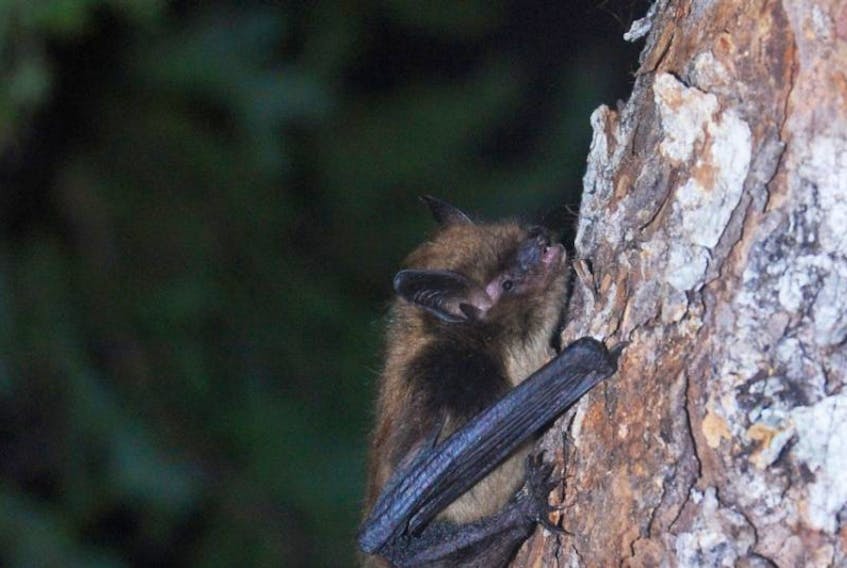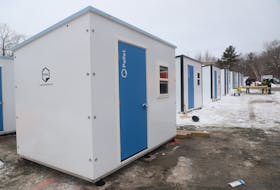In 2006, a fungus called whitenose syndrome (WNS) was first detected in New York State and caused the death of many bats in an overwintering colony. The fungus originated in Europe and somehow found its way to North America. Since then it has spread, through direct bat to bat contact, all the way to Nova Scotia in 2011. Over the winter of 2012-2013, a decline of 95 per cent was documented at five local overwintering sites.
Bats infected with WNS typically die of starvation or hypothermia as it causes them to wake up out of their winter hibernation in an effort to fight off the fungus. Each time they wake up during hibernation, it burns their precious fat reserves needed to survive through the winter. A characteristic of colonies suffering from an infection of WNS is bats flying around during the daytime in late fall, winter and early spring attempting to find food. Individual bats appear to have white, fuzzy growth on their exposed skin including the nose, ears and wings.
Since WNS first hit in Nova Scotia, researchers
at the Mersey Tobeatic Research Institute (MTRI) have been working on ways to help these ecologically important species. Bats are known for being able to eat up to 1,000 insects an hour, acting as an excellent source of insect control. To help bats, in 2013 they launched a provincial bat reporting website (www.batconservation. ca) and hotline (1-866-727-3447) to gain a greater understanding of the bats persisting in the province in the wake of this devastating disease.
Thanks to Nova Scotians, more than 3,000 sightings of bats have been reported over the past five years and 13 sightings were reported in the first week since the website reopened on May 15 this year.
“We need people to report observations of bats each time one is seen, especially repeat sightings in an area. Reporting your bat sightings provides significant information on the bats we have left in the province. These healthy individuals are the basis for recovery in the future,” says Lori Phinney, wildlife biologist with the MTRI.
MTRI has also launched a new project to monitorbats in Nova Scotia. They plan to work with homeowners and landowners who have bats on their property by using acoustic monitoring
technology.
“We have been using the provincial bat reports to find significant sightings and then partnering with those landowners to help monitor their bats using both acoustic monitors and visual bat counts. But we are still looking for more landowners to partner with,” says Phinney. Using acoustic monitors, researchers are able to record the echolocation calls that can’t be heard by the human ear to understand site activity levels and identify species.
MTRI researchers will also be revisiting sites monitored before WNS hit to see what is going on now. So far, they have been monitoring a group ofmore than 300 healthy female bats and their pups in southwest Nova Scotia that appear to have evaded the fungus. Through visual surveys, they saw this maternity grow from 2016 to 2017 by 50 bats.
For more information on MTRI’s bat project, email [email protected], call 1-902-682-2371 or visit www.merseytobeatic.ca.









